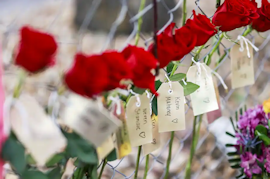|
The Contagious Nature of Mass-Shootings Fueled by Desire for Fame
After three deadly gun rampages, survivors and experts fear what comes next
 Authorities
laid out a harrowing sequence: A 21-year-old white supremacist was believed to
have posted a 2,300-word screed online in August 2019, saying the mass shooting
he was planning was inspired by another shooter who had earlier killed 51 people
in New Zealand mosques. Minutes later, authorities say, Patrick Crusius stormed
into a Walmart in Texas, killing 23 people, most of them the Latinos he said he
had targeted. Authorities
laid out a harrowing sequence: A 21-year-old white supremacist was believed to
have posted a 2,300-word screed online in August 2019, saying the mass shooting
he was planning was inspired by another shooter who had earlier killed 51 people
in New Zealand mosques. Minutes later, authorities say, Patrick Crusius stormed
into a Walmart in Texas, killing 23 people, most of them the Latinos he said he
had targeted.
Such cases have helped establish what experts say is the
contagious nature of mass shootings: When one
high-profile event takes place, another is likely to follow.
That is why recent events have them worried. Over the past three weeks, 22
people have died in three major mass shootings in the United States, according
to a
Washington Post database that tracks those events.
Gary Slutkin, an epidemiologist who studies mass shootings and intervention
methods, said that to understand the contagious nature of these high-profile
events, it helps to think of it like a disease.
For mass shooters, he said, exposure often comes from hanging out in online chat
rooms where people discuss and glorify past mass shooters. Susceptibility might
come from a perceived grievance — something they believe is unfair in their life
— coupled with past trauma, like being bullied, he said.
Mass shooters are frequently obsessed with large, deadly rampages. They
carefully follow traditional news coverage and social media posts of such
events. They study the mechanics of how past shooters planned their attacks.
They hang out in chat rooms where they talk about the affinity they feel with
past shooters. This fuels a contagion, experts say, that can sometimes agitate
for years within shooters before they act.
&uuid=(email))
James Densley, co-founder of
The
Violence Project, a nonpartisan research center, said the online forums give
like-minded people a place to gather. They often paint past mass shooters as
heroes and study ones who killed a large number of people, especially if they
left behind documents that detail their plans and grievances.
Lankford said the contagious nature of the shootings is often fueled by the
desire for fame, which involves a “distasteful” competition with prior
shooters who gained some form of notoriety. “I want to do this, but I want to do
it better,” he said, describing the way copycats broadcast their intentions.
A 2016
study showed that from 1966 to 2015, fame-seeking mass and active
shooters averaged more than twice as many victims as shooters with no known
motive. Investigators have not said publicly if any of the recent shooters
appeared to be seeking notoriety. (The FBI defines active shooters as those who
may shoot and kill people in a public place, but also includes those who injure
but do not kill and those who attempted an event but failed.)
The contagious nature of mass shootings can also prompt threats which,
even if they are a hoax, can send shock waves through communities. Two weeks
after the 2018 mass shooting at Marjory Stoneman Douglas High School in
Parkland, Fla., in which 17 died, school officials, parents and students across
the nation were rocked by 638 copycat threats that targeted schools,
according to the Educators’
School Safety Network.
The Post database shows major mass shootings overall have skyrocketed over
the past decade. More than 180 shootings have taken place since 1966, with
more than half — a total of 96 — taking place since 2005. The highest number,
13 mass shootings, happened in 2019.
Many mass shooting experts say the media also play a role not only in
educating the public about the events, but also in making them contagious.
They discourage the use of the shooters’ names to curb the allure of fame
they are seeking. They encourage focusing most of the attention on victims.
However, they also note that as social media and online platforms have
grown more dominant as purveyors of news, it has become far more difficult to
rein in online conversations that can spur follow-up shootings.
“What we are seeing right now is a clustering of these incidents,” she
said, adding that it fits the pattern of what her own research has shown. “About
20 to 30 percent of mass shootings appear to be inspired by a mass shooting in
the recent past. On average, about two weeks after.”
washingtonpost.com
|